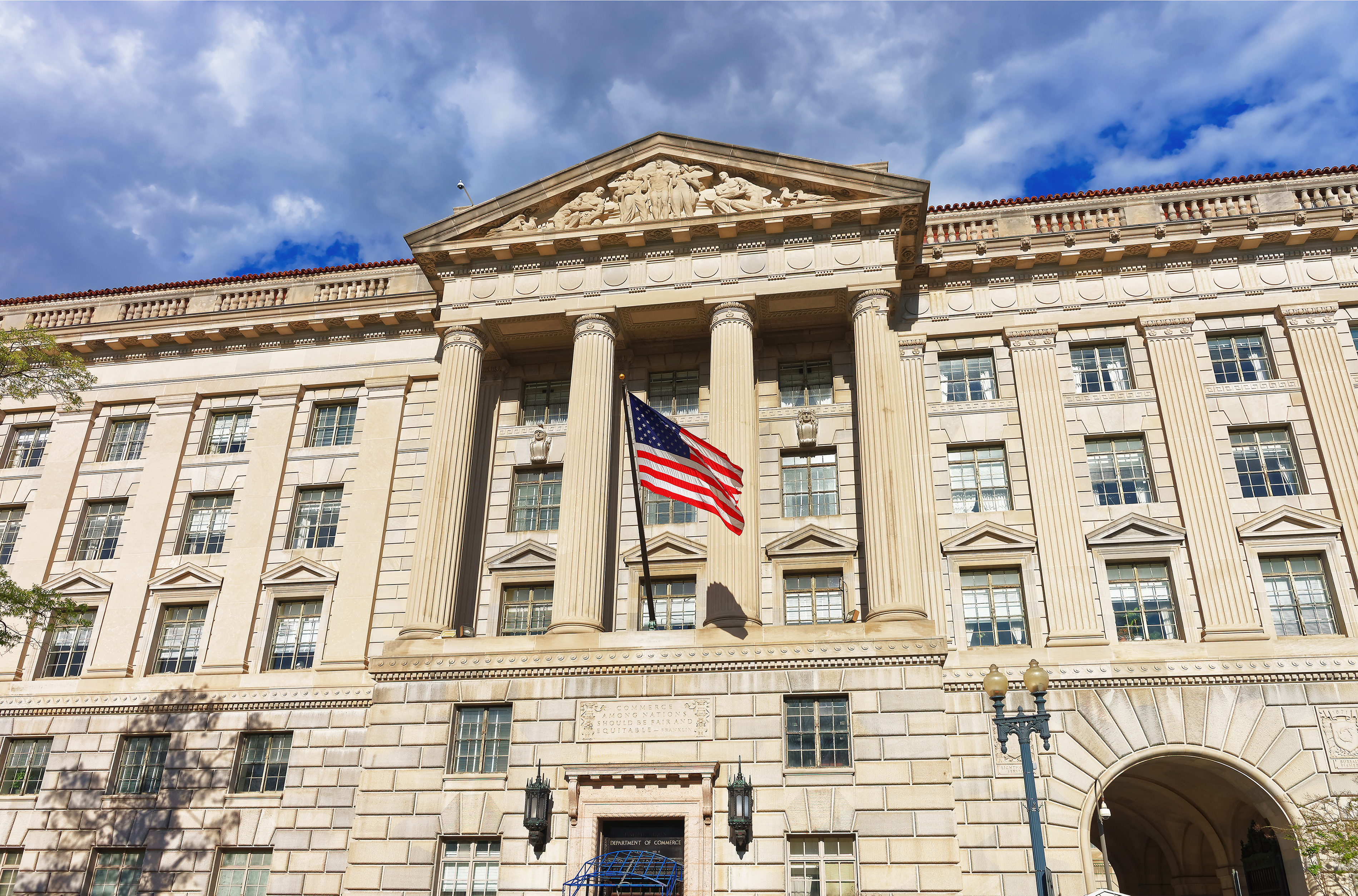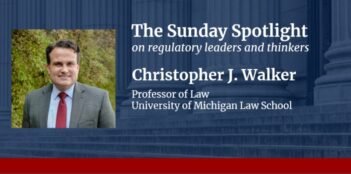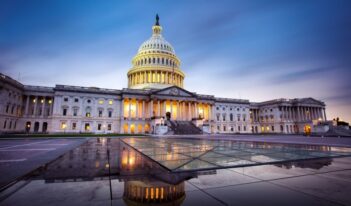
Administrative law should move past its dichotomous debate over agency independence.
I want to talk about the distinction between so-called independent agencies and executive agencies. My main thesis today is that, when considering the issue around which this panel has been organized—balancing insulation and accountability—there is a better concept to apply than agency independence. “Independence” normally leads administrative lawyers to think about conditions for the removal of the head of an agency. The better concept to use when balancing insulation and accountability is agency “autonomy.” Instead of a strict binary distinction between independent and executive agencies, autonomy comes in degrees.
Furthermore, all agencies—even executive agencies—need some good amount of autonomy. Indeed, in this regard, an even better way to think about agency autonomy is as “semi-autonomy,” to borrow from Harvard anthropologist Sally Falk Moore.
A focus on autonomy is intended to go beyond formal structures of agencies, such as the for-cause removal protection. It is a way of capturing a broad theme within administrative law that emphasizes the importance of neutral expertise, and not partisan ideology, as a driver of decisions within administrative government. In fact, one could say the notion of a government of laws, and not of men or women, suggests an autonomy to law itself that is often viewed as highly desirable and valuable. It is that same notion of separation, that same autonomy, which is also valuable within administrative government.
Law enforcement and administrative functions should be carried out in a neutral, expert manner that advances the public value choices that are reflected in law. It should not be driven by—at the administrative level—the personal or political preferences of the prosecutors or administrators.
Much of administrative law reflects this desire for administrative autonomy. Take the Supreme Court decision in the State Farm case. In that case, the Court made clear that the arbitrary and capricious standard in the Administrative Procedure Act calls for agencies to make decisions based on reasons and on a careful consideration of evidence—not just on the basis of politics, such as from a change in administration. Autonomy is vital to ensure that administrative government is based upon sound science, on evidence and expertise. That is what we are really after with autonomy, and that is why all agencies need autonomy.
With operational autonomy in mind as a value for government, we can pause to look again at the formal distinctions between independent and executive agencies. Although these two types of agencies are often characterized or distinguished based upon the presence of a good-cause or for-cause removal limitation, we can benefit from thinking about how that formal distinction has just a contingent relationship with autonomy. In other words, formal independence may or may not advance autonomy.
I think a focus on autonomy is important for a couple of reasons. First, moving past distinctions in agencies based on formal independence matters because, as I have indicated, both kinds of agencies in the traditional dichotomy between executive and independent agencies should have some degree of autonomy. Second, the contingent relationship between formal structures and the actual level of agency autonomy suggests that we should look beyond formalities and ask how agencies are really operating.
A good bit of current research on the nature of agency independence is pointing the way. For example, Ricky Revesz and Kirti Datla have a terrific article that shows, even at a structural level, how what constitutes formal independence of an agency is continuous, not necessarily a binary distinction. When we shift to operational autonomy itself, that is definitely on a continuum.
For many years, the OECD has been recommending to governments around the world that they promote independence of regulatory authorities by using formal structures. But most recently—in its most recent reports on agency and regulatory independence—the OECD has recommended not focusing solely on formal structures, but recommending the primary goal of ensuring de facto independence—or autonomy.
Autonomy is also helpful in expanding the scope of the pressures that can affect what agencies do—and what kinds of pressures we need to be concerned about negatively affecting governmental performance. The formal, independent–executive distinction focuses squarely on the President’s role in the day-to-day shaping of administration. And that is one factor affecting autonomy, to be sure. But so, too, is it important to ensure agencies operate with autonomy from pressures from special interest groups—that is, they avoid regulatory capture—as well as possess autonomy from pressures from unrepresentative congressional committees and their political niches—what Hugh Heclo called “issue networks” and others have called “iron triangles.”
Autonomy may also help us think harder about, and understand more clearly, calls for separation from, or a degree of insulation from, judicial oversight. Remember, the Supreme Court itself said in Vermont Yankee that the judiciary—an unelected institution—should not be imposing its own procedural requirements on agencies or otherwise driving the direction of the administrative state.
As a positive or empirical matter, then, agencies do have autonomy, even if they are not formally structured to be independent. And as a normative or legal matter, all agencies should strive toward autonomy. Of course, they should not be fully autonomous. They should be accountable as well. And this is where the notion of semi-autonomy comes in, a notion that goes back at least to 1973 in a famous article by Harvard anthropologist Sally Falk Moore. Moore was an anthropologist, not an administrative lawyer. And she wrote about the law itself as operating as a semi-autonomous force within society, that is, as an institution that is both shaped by society—social and political factors—at the same time it is also tries to shape society—social relations, political conduct, and so forth.
Law in a semi-autonomous sense is much like the bank of a river, with the water serving as a metaphor for society and for social pressures. A riverbank does shape the direction of the flow of the water. But the water also bumps up against the riverbank—sometimes it even overflows it—and in the process the water shapes the direction and shape and angle of the riverbank itself.
The challenge with semi-autonomy, as a prescriptive matter, is finding the optimal degree of semi-autonomy for administrative agencies. Semi-autonomy recognizes the mix that Chris Edley spoke of with his trichotomy of administrative law: legal doctrine, science, and politics all mixed together.
This notion of semi-autonomy, of breaking free of the binary distinction between independent and executive agencies, can give us some purchase and some direction with respect to questions of the design of the administrative state. Semi-autonomy recognizes that all agencies need autonomy—but it also allows for the possibility that the precise degree could, and should, vary.
Let me close by saying a few words about what autonomy and semi-autonomy might have to offer to the issue of regulatory analysis and whether to bring so-called independent agencies under the rubric of Executive Order 12,866.
I recognize the desire for improving regulatory analysis at agencies like the Securities and Exchange Commission, Federal Communications Commission, Federal Trade Commission, and so forth. Numerous studies have suggested that these agencies do not conduct regulatory analysis as often or as well as so-called executive branch agencies. That is what gives rise to the call … for applying the OIRA review process to these so-called independent agencies.
But it is worth considering another approach, one that falls between the extremes of the status quo, with no requirement for independent agencies to conduct regulatory analysis before issuing major new rules, and the full application of OIRA review to these agencies. It is surely worth looking at a middle ground when the extremes are either undesirable—after all, we’ve been living with the world with virtually no requirements for these agencies—or practically unattainable—as I think application of review by the Office of Information and Regulatory Affairs (OIRA) would be. After all, notwithstanding recommendations from organizations like the Administrative Conference of the United States and from a variety of scholars who suggest that Presidents could lawfully subject independent agencies to an OIRA-like review process, it simply has not happened.
Other than an all-or-nothing choice, we could take a modest step, a semi-step, if you will: require agencies that are defined as independent under the Paperwork Reduction Act to comply with the requirements of the Unfunded Mandates Reform Act (UMRA), a statute that requires agencies to conduct benefit-cost analysis before issuing rules that will impose significant costs on the private sector. The advantage of this approach, of withdrawing the exemption that is in UMRA for the so-called independent agencies, is that it removes any excuse that independent agencies might have for not doing this kind of regulatory analysis. It does not go all the way to subjecting them to White House scrutiny, which would … be a big change in our prevailing norms and practices in the federal government.
Ultimately, recognizing the semi-autonomous nature of the administrative state is important descriptively—it does a better job at describing what is going on at both executive and so-called independent agencies. But it is also helpful prescriptively. It helps break free of binary distinctions with respect to policy interventions, moving beyond an all-or-nothing approach with respect to regulatory analysis. The best resolution would be to impose a requirement for benefit-cost analysis that is judicially enforceable under UMRA. This should encourage agencies to conduct better analysis, and it will, in its way, strike a better balance between insulation and the kind of accountability that comes from good regulatory analysis.
This essay is excerpted from the published transcript of the showcase panel entitled “Balancing Insulation and Accountability of Agency Decisions” at the 2018 Federalist Society’s National Lawyers Convention. The transcript, which has been minimally edited here to conform to The Review’s style conventions, appeared in the Summer 2019 issue of the University of Dayton Law Review.




